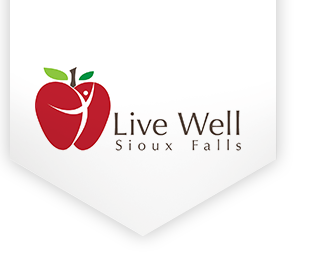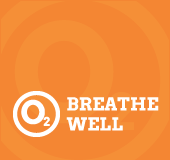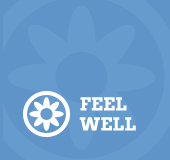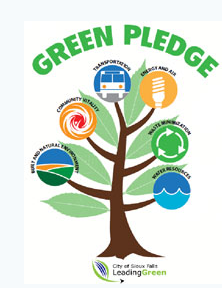Sustainability and Public Health - Protecting Our Triple Bottom Line
Apr 22, 2019
As we celebrate Earth Day 2019, it is important to understand the connection between environmental sustainability and public health.
The triple bottom line is a model that is often associated with sustainability programs and initiatives. The three principles that make up the triple bottom line or pillars of sustainability are social equity, environmental awareness and economic vitality. When communities incorporate these three principals into their decision making process, they build a truly sustainable community that will stand the test of time. These same principals are just as easily applied to healthy communities. What makes a town or city sustainable will intrinsically make it a healthier place to live, work and play.
Since the implementation of the City’s Sustainability Master Plan in 2012, Sioux Falls has been growing our sustainability footprint. This master plan encourages our citizens to improve our community’s triple bottom line through conserving key resources, minimizing waste, managing growth, and utilizing efficient transportation. Below are just a few examples of how these best management practices for sustainability tie into public health.
Water Resources
Safe and affordable drinking water is key to a healthy community. Unfortunately in many locations, water is being consumed at a faster rate than which nature can replenish it. Utilizing water conservation strategies today will ensure future generations have a consistent supply of safe and affordable drinking water.
Tips:
- Limit water use and install low-flow fixtures and conservation devices.
- Utilize native plants that grow best in our climate and that require less watering.
- Build a rain barrel to collect rain water to water your plants and garden.
- Protect our waterways by limiting lawn care chemicals and only allowing rainwater and snowmelt down the storm drains.
Energy Resources
While renewable sources of clean energy are making inroads into our electrical grid, meeting our energy needs still relies heavily on the burning of fossil fuels. Emissions from the burning of these fossil fuels contributes to major air quality concerns. Clean air is as much of a factor to public health as it is to sustainability. Air pollution causes both health and environmental consequences that are not easily remedied.
Tips:
- Conserve energy to reduce greenhouse gas emissions and improve air quality. Do this by unplugging electronics when not in use, turning lights off when they’re not needed, and sealing your home from the outside air temperature fluctuations.
- Purchasing materials made from recycled materials means fewer natural resources need to be used to produce the products we use.
- Use alternative transportation! Walking and biking creates zero greenhouse gas emissions and is much better for the environment. When possible, utilize the City’s transit system or carpool to work.
Waste Minimization
Reducing waste is an inherit problem in today’s disposable culture. Production of disposable products are at an all-time high and with limited reuse or recycling potential these items are taking up valuable space in our landfills. Landfills perform an essential service to public health, but are expensive to build, maintain and operate. By utilizing less disposable products, reusing and recycling more, and buying wisely everyone can help maintain a healthy community that is economical and environmentally conscious.
Tips:
- Buy Local: Locally produced products often require little to no packing or shipping material.
- Buy in bulk: Bulk items are often shipped with less plastic packaging.
- Buy products made from recycled material.
- Buy products that can be reused or recycled.
Built and Natural Environment
Natural areas are critical to healthy and sustainable communities as it allows citizens a place to exercise, create, and relax. Unfortunately, natural areas can be limited in urbanized communities as they are often an afterthought to development. Once the natural landscape is replaced by expansive pavement covered roads and parking lots, bringing nature back is not easy. We are fortunate in Sioux Falls to have the greenway trail system and over 80 parks within our community. Maintaining nature in any development strategy provides numerous benefits to public health.
Tips:
- Communities should implement low impact development strategies.
- Plant a backyard garden or utilize a community garden plot to supply you and your family with fresh, seasonal fruits and vegetables.
- Opt for a walk of the greenway or activity in a park instead of indoor entertainment.
Transportation
Emissions from fossil fuel powered transportation contributes the largest portion of urban air pollution. Reducing our dependency on this mode of transportation will greatly improve our public health.
Tips:
- Walk or bike as a form of transportation as it requires no fossil fuels and provides many health benefits.
- Utilizing public transportation will also reduce fossil fuel emissions and is more economical than driving a full size car on daily commutes.
For more information about the City’s sustainability program, visit http://siouxfalls.org/green.






















